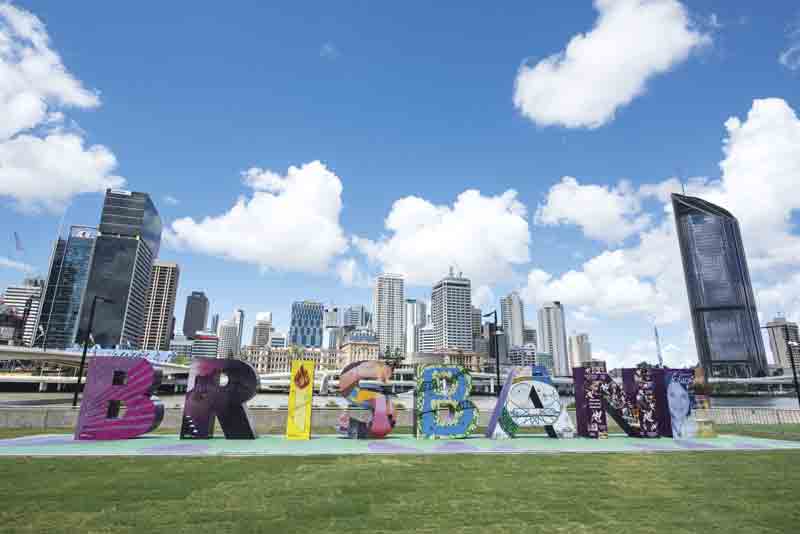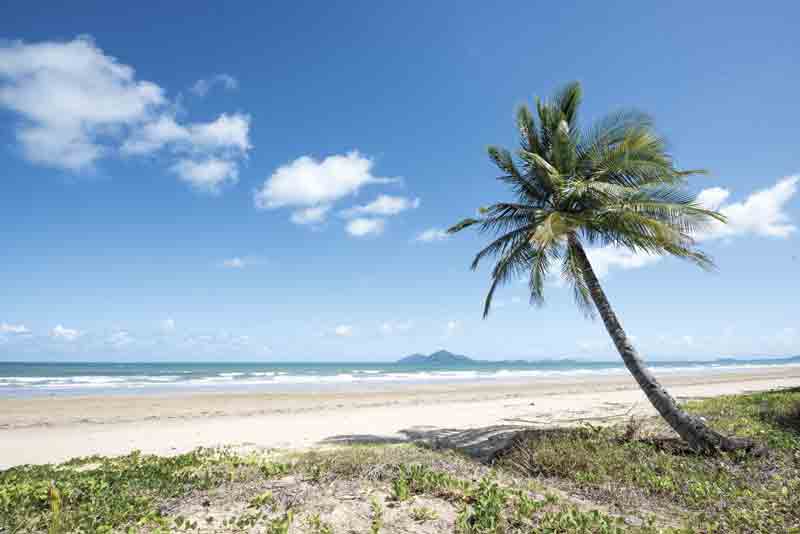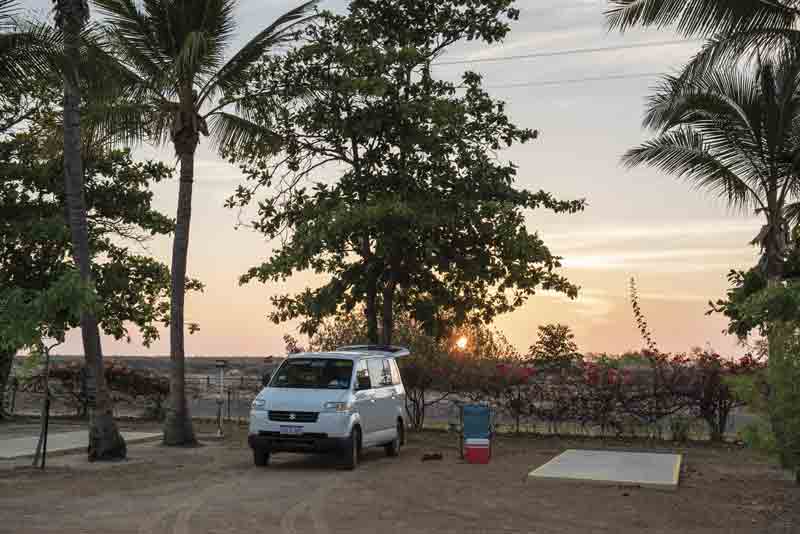Motorhome travel: Exploring the Australian Outback in a campervan
See also: Campervan: Travel and Destination Guide
Words and pictures by Mike Waterman
If simple plans are the best, mine was a humdinger. The idea was to fly into Perth, Western Australia, having hired the cheapest campervan I could find online, turn north and keep going until I arrived back where I had started seven months later.
That was as complicated as my route planning ever got.
Taking my own vehicle was quickly rejected as an option. Shipping time, the horror stories of the high standards of vehicle cleanliness required to pass the quarantine inspection and the need for a carnet de passage, all pointed towards rent or buy locally. A seven-month trip seemed too short for the hassle and risk of buying and selling, so that left hiring.
My budget dictated a very simple camper - a Suzuki APV people carrier from Wicked Campers, stripped of its rear seats and replaced with a plywood interior. The dinette seating had a drop-down table to become a double bed and, round the back, under the protection of the tailgate, was a basic kitchen arrangement.
I had cooking equipment, a sink, hand-pumped water, a cool box and a single-burner portable gas stove. Storage under the seats was excellent and all of this in a length of 4.23 metres. No leisure battery, no interior lights, no refrigeration, but when you’re hiring to a price, you get what you pay for. The 1,500cc petrol engine was plenty for a tourist in no rush and returned 35mpg. Importantly, the van had air- conditioning and two dashboard charge points.
For my first night in Perth I had picked a B&B, which was a $30 taxi ride from the airport and an hour’s walk from the Wicked Campers depot. Ten hours after arriving I had wheels. Arriving in Australia at the beginning of spring, I had decided to head clockwise, visiting the tropical Northern Territory before the summer rainy season commenced.

Surprises on the coast of Western Australia
My first few days heading up the coast of Western Australia brought three shocks:
Firstly, Australia is not cheap - I wandered around supermarkets depressed at the prices.
Secondly, I’d arrived at the start of a school holiday. Australian campsites can be expensive at the best of times, but they rocket in holiday time.
Finally, it was raining. In fact it was pouring down, which wasn’t at all what I expected. As it turned out, that was the worst weather I had in the whole seven months. Rain became a very scarce event.
The other things I quickly learnt were much more positive, and the Australians are so friendly. You can walk up to anyone and start a conversation and they will take the time to chat and answer your questions.
Australia is vast. I’ve toured large countries before but Australia feels bigger because it changes slowly with distance. In other countries, you feel like you have travelled because the scenery has changed style. In Australia, you can drive for days and it’s the same as when you started.
The country is also empty compared to the UK. This perception changes a little on the more populous east coast but, relatively speaking, it’s deserted. The beauty here seems different to anywhere else I have visited. There is a real sense of age about the country.
The landscape looks like the weather has been gradually wearing it down since the beginning of history, slowly breaking up the rock and turning it into desert. There is an impression of a very old landscape losing the battle with the elements in a contest that seems as old as time.
My first national park was the Pinnacles and I bought a National Park annual pass. This was somewhat misnamed, as an annual pass is only good for the state, so it’s not national at all! It is easy to forget Australia is a commonwealth of states.
Finding a fridge fit for the campervan

As I headed into the heat and humidity of the north, it didn’t take me long to change my camping set-up. I had gradually realised that in caravan parks, unpowered pitches can be very much the cheap seats, without being that much cheaper.
They often didn’t have defined pitches, so could get very squeezed and they were seldom at the end of the campsite with the view. I took to taking a powered pitch simply because they were so superior, for not that many extra dollars. Once I was paying for power it wasn’t much of a leap to say, ‘well I may as well use it’, so I bought a 25-metre extension lead at a Bunnings DIY store and could at least use my laptop each evening for as long as I fancied. I later also bought a fan.
In the Kimberley region of the northwest I hit my hottest weather, with regular highs of 45 degrees Celsius. Keeping hydrated was difficult when bottles of water seemed hot enough to make tea. Most campsites have communal kitchens, which include fridges, but it takes a long time to cool a bottle of beer in that heat – even in the freezer section!
Arriving in Darwin I had the opportunity to go shopping for the first time in thousands of miles. I walked into a branch of Boating, Camping and Fishing and asked the sales assistant for a 12V cooler I had spotted online. He asked me about my trip and my vehicle, then shook his head. “It'll be fine when you’re driving with the AC full on, but after that it would not stand a chance,” was the verdict on my plan to have a supply of cold drinks!
Now this is an interesting case study in how a traveller deals with disappointment, which in my case was to lose all sense of budget. It had taken me a while to convince myself I should blow $239 (around £130) on something I wouldn’t be taking home after the trip but on the long, hot drive to Darwin, the thought of cold drinks and food had been increasingly tempting.
It had been like a beacon of hope shining down from the Timor Sea. When that plan was dashed, my desire for chilled beer on tap was so strong, I walked out of BCF the proud owner of an Engel 12 and 220V compressor fridge at nearly four times the price! I didn’t even go for the very smallest Engel, as it was too short to take a bottle of wine. Suddenly I was a fridge connoisseur, with standards to uphold, but it was the best decision of my trip and yes, it came home with me.
My other Darwin purchase, which greatly increased my comfort levels, was a length of flyscreen that I hung over each car door at night, allowing all the windows to be thrown wide open.
The outback is well set up for free camping. There is recognition that distances are vast and people need to sleep en route. Regular rest areas are provided, some of which allow 24 or 48-hour camping. Long-drop toilets are often provided and some areas even resemble campsites, with individual pitches cut back into the vegetation. As most are in the middle of nowhere, it was often the case I had the whole one or two-acre site to myself. Like everyone else I met, I used the WikiCamps app to find these sites, as well as the regular campgrounds.
Australians campers have different styles
Watching Australian campers is fascinating, as the style is so different to Europe. Motorhomes are not as numerous in Oz. The market is for caravans and trailer tents. The occasional imported British caravan can be spotted, but the Australian norm is for a big, heavy-duty off-road style van, usually with twin axles. These vans are built to match the tow vehicles in terms of toughness and ground clearance. To increase spare wheel flexibility, the wheels are usually matched with the 4x4 tug, which is invariably a Land Cruiser. Similarly, the trailer tents are rufty-tufty off-road style, with heavy-duty canvas tents.
Engel fridges dominate the market and most families will have two, maybe three fridges, usually each around 60 litres. That’s one for food, one as a freezer and one for beer. Awnings and gazebos provide the vital shade and if you only have one gazebo, you really aren’t trying hard enough, basically…

Australia was quiet until just north of Brisbane, on the east coast, a few days after Christmas. Schools had just broken for the summer holidays and suddenly campsites were full and parking in towns and at beaches was challenging.
Rather than compete, I changed my route and spent January inland. Australians like to be by water, so it seemed natural to head the opposite way. Campsite prices remained the same, there were no crowds and pitches were plentiful. I headed down to the mining area of Broken Hill on the New South Wales and South Australia border, before picking a different inland route to get back to Brisbane in time for the end of January when the schools returned and the crowds disappeared.
Hints and tips for touring Australia in a campervan
Other tips and learnings I can pass on include the fact that road trains are not nearly as frightening as their fearsome reputation suggests. Yes, they are immense and not slow once they get going, but they only operate on the open roads. There are assembly areas outside of towns, so you only find them on the long straight roads in the bush.
As the roads are straight they can be spotted in the mirror miles in advance and it is very easy to just get out of their way – a move for which they will usually show their thanks! I only came across two trains going slower than me and, as I could see ahead for what seemed miles, it was very easy to overtake – even in a 1,500cc van. In the unpopulated areas people are just so friendly. It’s such an event to see another vehicle on the road, everyone waves; a really lovely habit.
Australian wildlife can seem frightening to the visitor but it’s obvious where not to go into the water to avoid sharks, crocodiles and jellyfish. When hiking, I took up the habit of walking loudly to announce my approach to basking snakes. In Sydney, I also got a local to take me on a spider safari around his garden to point out the eight-legged creatures I should avoid!
My two-wheel drive van was fine. Yes, I would love to return and drive the thousands of miles of 4x4 routes available, but there is much to see in a 2WD. Camping is very widely available, even to see some of the cities such as Darwin, Cairns, Brisbane, Sydney and Adelaide. The only places I went for a hotel rather than camp were in Canberra, Hobart, Melbourne and Freemantle/Perth, which amounted to 12 nights out of the 213.
If seeing the whole of Australia in a single go is not for you, every state is worth seeing and all would be worth a dedicated trip.
Whichever mainland cruising ground is chosen, I would strongly advise spending time in the Bush. It has a unique feeling and landscape and the wildlife is wonderful. With no light pollution, the night sky is simply mind blowing. I fell head over heels in love with the outback and am determined to return.
Useful links for planning your trip to Australia
gov.uk/foreign-travel-advice/australia
worldwidemotorhomingholidays.co.uk
caravanclub.co.uk/overseas-holidays
This feature was originally published in the March 2019 edition of Campervan magazine - click here to buy and download a digital version of that issue.
This trip took place prior to the coronavirus pandemic. We are publishing it for your enjoyment and to help you plan your future trips. Read the latest camping travel advice here.
Expert Campervan advice to your door!
Campervan is the exciting monthly magazine that will give you all the inspiration you need to explore the world in your campervan. Every issue is packed with real-life campervanning experiences, inspiring travel ideas in the UK and further afield, the best campsites to stay on, campervan road tests and reviews of the latest models, and much more!
Want to know more about Campervan Magazine?








Recent Updates
Engine management lights: all you need to know
What is the engine management light? What does it mean, and what do I have to do? ...
Motorhome air suspension: all you need to know
Motorhomes are heavy and the additional weight of equipment and height of the bodywork can increase the loads ...
Motorhome WiFi: how to get better motorhome internet
Staying connected on the move is more and more essential, so relying on campsite WiFi isn't an option – here ...
A class of their own - our guide to A-class motorhomes
Thinking of trading up to an A-class, or even going straight to the top of the motorhome tree? We guide you ...
Explore overseas on a motorhome dream tour
Enjoy exotic travel in a campervan or motorhome by hiring, swapping with someone else or exporting your ...
Motorhome water systems: everything you need to know
On-board water is an important part of every motorhome – here’s everything you need to know ...
Campervanning in Europe: what you need to know
Whether you're planning a leisurely drive through the French countryside, navigating bustling city streets in ...
Campervan security: all you need to know
With thefts on the increase, it’s important to know how to keep your campervan secure and prevent campervan ...
Campervan furniture: everything you need to know
Our campervan experts guide you through all the essentials for your campervan, including tables, chairs, ...
Campervan finance: how to fund your purchase
Here we look at the different types of campervan finance available, to help you decide what’s the best option ...
Other Articles
Britain’s best used motorhomes
Want a great motorhome without paying the premium for a new one? Here's a guide to the best you can get in the pre-owned market for each layout, ...
Which motorhome? Choosing the perfect motorhome for you
Choosing a motorhome or campervan is one of the biggest buying decisions you’ll ever make, so it's important ...
Campervan washroom essentials: stay fresh on the road
Our guide will take you through the campervan washroom essentials you'll need so you're well-prepared for ...
Dogs in campervans: all you need to know
Follow our advice and your dog will enjoy campervanning as much as you do ...
Electric campervans: all you need to know
Our guide will take you through everything you need to know about electric campervans and what the future ...
Motorhome electrics: a complete guide to your motorhome electrical set-up
Motorhome electrics can dramatically enhance the convenience and comfort of your vehicle – but they can be ...
Lighting for campervans: all you need to know
We guide you through all the lighting options available for you and your campervan, including interior ...
Electric bikes for motorhomes: our ultimate guide
Read our comprehensive guide to electric bikes for motorhome owners, helping you add electric power to your ...
Our guide to 'cheap' motorhomes in 2024
If you're on the hunt for an affordable new motorhome, this is the best place to start – we've rounded up a ...
Campervans in winter: all you need to know
Here's your guide to preparing your campervan for the colder months, whether you will be using it or putting ...